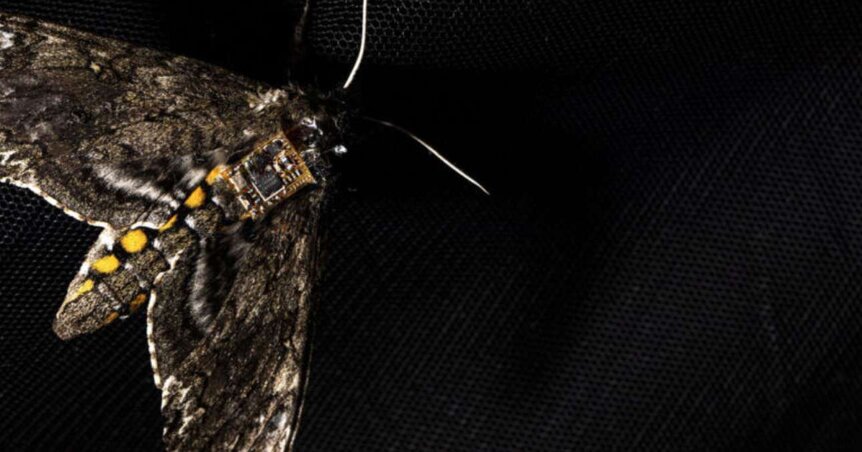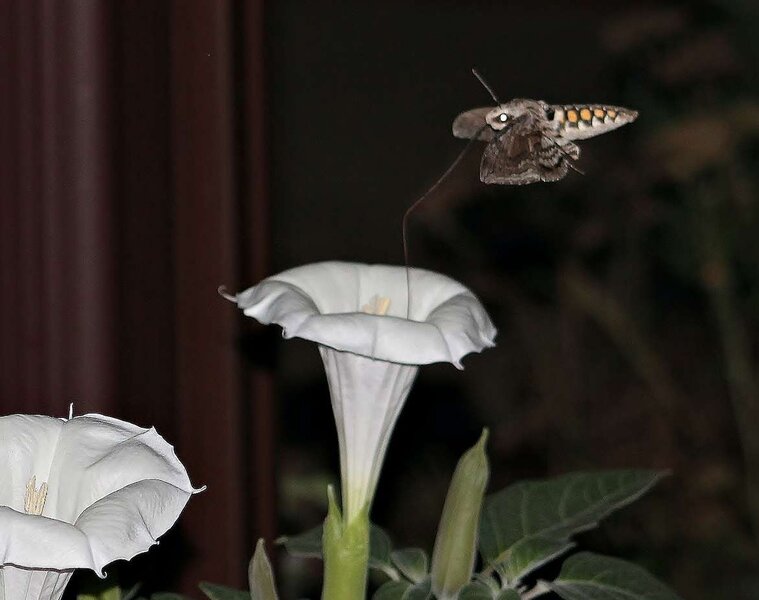Create a free profile to get unlimited access to exclusive videos, sweepstakes, and more!
Scientists hatching swarms of sensor-carrying moths to track the planet's weather

We all know it's a bug's world and we're just sharing it with them, as they outnumber human beings on the planet by a staggering amount. With an estimated 10 quintillion (that's 10 followed by 18 zeroes!) bugs crawling, creeping, and flying around the globe at any given second, they represent the largest biomass of any terrestrial animal, and their legions calculate out at approximately 1.4 billion bugs for every living person.
With so many insects on Earth, it just makes sense to harness their inconceivably large armies to do some good for our Big Blue Marble's climate, by employing them to be carrier vessels for hi-tech sensors to measure and record global ecosystem variables like humidity and temperature.
Investigators at the University of Washington's Paul G. Allen School of Computer Science & Engineering have created such an ambitious program and engineered a small, lightweight sensor that can remain intact after long drops in remote locations using an air force of moths to blanket the Earth. Think of this lofty endeavor as vast squadrons of helicopters or drones dropping equipment, food, or supplies on a near-microscopic level.
Details of Operation Moth Drop were recently published in the online journal MobiCom ’20: Proceedings of the 26th Annual International Conference on Mobile Computing and Networking, where they explained that the most difficult aspect of the project was building a sensor that could survive a 72-foot plummet while still being light enough to become airborne via a cargo moth.
These amazing leaf-like sensors are so tiny and featherweight that they safely flutter down to the ground when released.
“This is a strategy people use in disaster scenarios to deliver food and medical supplies, and is usually done with large planes or helicopters,” study co-author and Washington engineer Vikram Iyer explained. “That got us thinking, can we use this same idea with much smaller drones, or even live insects, to release sensors across a large area?”
Moths reaching their destination are sent a wireless trigger to detach their sensor and drop the microchip payload. Currently, the University of Washington scientists are specifically targeting weather-monitoring sensors, but this device can be applied to a wide variety of technology in the future.
When deployed, the team's 98 mg wireless sensor can operate for 1.3 to 2.5 years when transmitting 10-50 data packets per hour on a 68 mg battery. They demonstrated the system using a miniature drone and a common Carolina Sphinx or Hawkmoth (Manduca sexta).
"Our design takes inspiration from nature: small insects like ants can fall from tall buildings and survive because of their tiny mass and size," they wrote. "Inspired by this, we design insect-scale wireless sensors that come fully integrated with an onboard power supply and a lightweight mechanical actuator to detach from the aerial platform."
So be wary of zapping a pesky moth next time one enters your personal space, as it just might be aiding scientists with the planet's climate crisis.




























